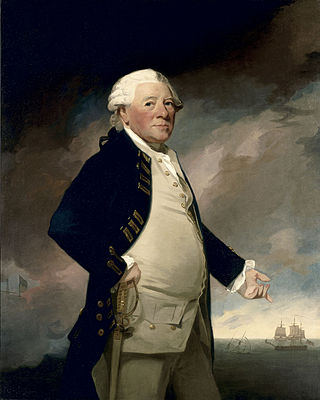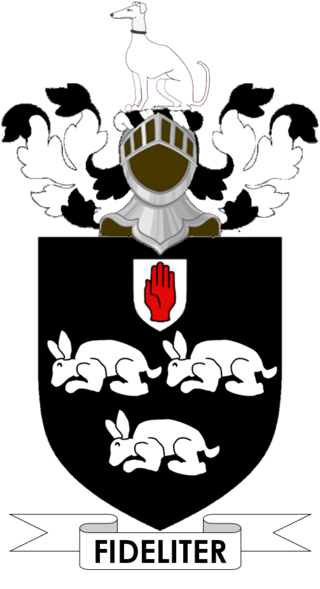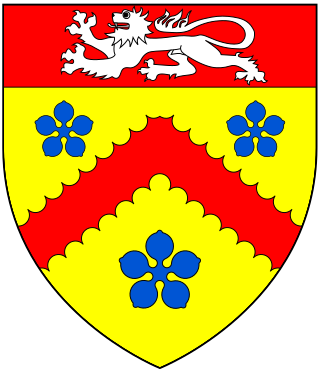
There have been two baronetcies created for persons with the surname Buxton, one in the Baronetage of Great Britain and one in the Baronetage of the United Kingdom. One creation is extinct while the other is extant.
There have been six Baronetcies created for persons with the surname Brown, one in the Baronetage of Nova Scotia, one in the Baronetage of England, two in the Baronetage of Great Britain and two in the Baronetage of the United Kingdom. Two creations are extant as of 2010.
The Egerton, laterGrey Egerton, later stillEgerton baronetcy, of Egerton and Oulton in the county of Chester, is a title in the Baronetage of England held by the senior patrilineal branch of the Egerton family.
There have been two baronetcies created for persons with the surname Adam, both in the Baronetage of the United Kingdom. One creation is extant as of 2009.
There have been two baronetcies created for people with the surname Jenkinson, both in the Baronetage of England. The seventh holder of the first creation was elevated to the peerage as Earl of Liverpool in 1796, a title which became extinct in 1851.

There have been seven baronetcies created for persons with the surname Parker, three in the Baronetage of England, two in the Baronetage of Great Britain and two in the Baronetage of the United Kingdom. Two of the creations are extant as of 2008. Though none of the different families of baronets were related, several supplied a number of flag officers to the Royal Navy.
There have been nine baronetcies created for persons with the surname Lloyd, three in the Baronetage of England, three in the Baronetage of Great Britain and three in the Baronetage of the United Kingdom. Two of the creations are extant as of 2010.
There have been five baronetcies created for people with the surname Walker, one is extinct, four are extant.
There have been three baronetcies created for persons with the surname Hare, one in the Baronetage of England and two in the Baronetage of the United Kingdom. One creation is extant as of 2007.
There have been three baronetcies created for people with the surname Riddell, one in the Baronetage of Nova Scotia, one in the Baronetage of Great Britain and one in the Baronetage of the United Kingdom. As of 2014 one creation is extant.
There have been two baronetcies created for members of the Boughton, later Rouse-Boughton family, one in the Baronetage of England and one in the Baronetage of Great Britain.

The Cunliffe Baronetcy, of Liverpool in the County of Lancaster, is a title in the Baronetage of Great Britain. It was created on 26 March 1759 for Sir Ellis Cunliffe, a slave trader and Member of Parliament for Liverpool. The fourth Baronet was a General in the Bengal Army. The fifth Baronet represented Flint Boroughs and Denbigh Boroughs in the House of Commons.
There have been two baronetcies created for persons with the surname Coghill, both in the Baronetage of Great Britain. One creation is extant as of 2008.
There have been four baronetcies created for members of the Thorold family of Lincolnshire, two in the Baronetage of England and two in the Baronetage of Great Britain. As of 2014 one creation is extant.

There have been three baronetcies created for persons with the surname Cooke, two in the Baronetage of England and one in the Baronetage of Ireland. One creation is extant as of 2013.
There have been two baronetcies created for persons with the surname East, one in the Baronetage of Great Britain and one in the Baronetage of the United Kingdom.
There have been three baronetcies created for persons with the surname Duncan, one in the Baronetage of Great Britain and two in the Baronetage of the United Kingdom. All three creations are extinct.

Dr Egerton Leigh, was an 18th-century Anglican clergyman and landowner in North West England.
Sir Egerton Leigh, 1st Baronet, was a British colonial jurist, who served as HM Attorney-General of South Carolina. A Loyalist, Sir Egerton fled South Carolina permanently for England in 1774.
The Reverend Sir Philip Grey-Egerton, 9th Baronet, was a 19th-century Anglican clergyman and landowner, who succeeded to his family baronetcy and served as Rector of Tarporley and Malpas, Cheshire.
This page is based on this
Wikipedia article Text is available under the
CC BY-SA 4.0 license; additional terms may apply.
Images, videos and audio are available under their respective licenses.





